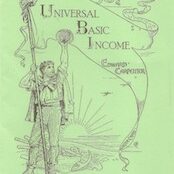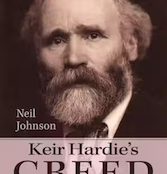The British National Party won its fifth local council seat in a matter of months in Halifax in January, attracting a brief flurry of national media comment and political hand wringing. BEN TURLEY looks at what happened.
“Halifax is a wonderful place and its people are not racist,” Alice Mahon MP said the day after the British National Party’s Adrian Marsden won a council seat in Mixenden Ward in January by 28 votes. In fact, making negative comments about “pakis” has the same conversational status in Halifax as complaining about the weather, although there are considerable pockets of resistance to that way of thinking, as the by-election result itself showed.
The culture of the town is insular – you are a foreigner if you come from another part of England let alone anywhere else. A former councillor of Irish heritage once said that very few people actually feel like they belong in Halifax, totally, and most people experience some degree of exclusion. Snobbery is as rife as racism, and some of the casual comments about people from Mixenden estate itself exhibit a prejudice as deep as that expressed about Asians. If David Blunkett wants more proof of “coiled anger” in the collective English psyche, then a trip to Halifax would be in order.
However, Halifax is also a place of strong contrasts – most of its council wards are mixtures of urban and rural, rich and poor. Reading the national press, you would think Mixenden was simply a big concrete estate. It isn’t. Follow the valley down from Halifax town centre, through the idylls of Wheatley, and you come to the estate. Turn up the hill and you come out in Pellon, with rows of modest but largely well-maintained terraces and some beautiful older stone cottages. Then there is the ‘middle-class’ area, Mount Tabor.
Politically, Mixenden is not a Labour stronghold in the same way as, say, an inner city ward in Newcastle or Newham. Since the creation of Calderdale in 1974 – an unpopular invention which has remained so – Mixenden has not always returned Labour councillors. In 2000, a Tory called Lorraine Stott won, when a deselected Labour councillor, Red Mellett, stood as an independent.
Calderdale council remains unloved partly because it is barely viable. It is the smallest council in West Yorkshire with a very low number of council tax payers and an aging population. Because of its demographic diversity, it is the only authority along the Pennine corridor not to qualify for neighbourhood renewal money. The ability to make political choices is, therefore, somewhat hampered by a complete lack of resources in comparison to more favoured areas like Leeds, Bradford or Manchester. More often than not, the council is hung.
Despite this, Halifax Labour Party should be in a very healthy state indeed, with one of the country’s most outspoken, though unassuming left-wing MPs representing it – at least, it should if you think along the lines of the Campaign Group. In fact, it is in a state of near-collapse, particularly in the North Halifax “Labour heartland” wards of Ovenden, Mixenden and Illingworth. Both DLP and CLP struggle to have quorums and there are possibly only four, perhaps occasionally five, branches in the constituency that meet, only one of which, Ovenden, is in the shaky Labour heartland.
Clinging to class
In Mixenden, all the active members are old and many are in declining health. The party still clings to concepts of class which define its constituency ever more narrowly, and it has been unable to work out alternative ways of involving the socially excluded and the socially aspirational home-owning classes in any meaningful political projects. However, it still knows firmly what it is against: war and Tony Blair.
The Labour group itself is actually the smallest group on the council. It had 11 seats before 23 January and has no policies, no strategy and no interest in politics. In May 2002, it did quite well and won two seats. Then it promptly entered the council cabinet with the Liberal Democrats and the Tories, against the advice of the regional director of the Labour Party in Yorkshire and Humberside, Nan Sloane. He bowed, eventually, to “local” knowledge and the NEC permitted it. A surprising number of people in Halifax believe Labour is still in control of the council, including some of the members of the group.
This year quite a number of (mainly Tory) councillors have quit for one reason or another and soon after the Mixenden by-election was announced, another seat became vacant in Rastrick. The BNP put forward candidates for both seats, but eventually withdrew from Rastrick. Apparently, this is a common tactic because it splits the forces of the opposition.
Labour’s campaign in Mixenden was run by regional officials and telephone canvassing was done from the national HQ in London, although some also took place from the Labour Rooms in Halifax. The usual “Get out the vote” materials were used, based on the marked register of those who had actually voted in general and district elections since 1997. The obvious weakness of this technique is that it does not reach those who don’t usually bother to vote.
Given that this was a mid-term council by-election caused because the sitting Labour councillor was disqualified for non-attendance, the existing Labour vote held up quite well. Encouragingly, most existing Labour voters, at least the ones I talked to, said their second choice would be Liberal Democrat, except for one or two who said Tory specifically because they felt that they would vote for anyone who stood a good chance of beating the BNP. One voter, a pensioner, said that she appreciated the extra money Labour had given her but was disappointed with Tony Blair “because he’s right up that George Bush’s arse”.
During the campaign, Mixenden ward was flooded by BNP activists who moved around in large groups, delivering newspapers and leaflets. There was even a campaign video, which is still available on the BNP website. As you will have no doubt read, the BNP activists – whose accents ranged from Scottish, through Geordie to estuary English – were dressed smartly, usually in black. Their behaviour in public was subdued, but that did not lessen their menace as they swilled round corners and swamped whole streets.
Apparently, they now model their campaign techniques on the Liberal Democrats, having downloaded the Lib Dem’s handbook on how to campaign in local elections from the internet. On the whole, their leaflets said nothing about local issues, concentrating on asylum seekers and calling for an end to racist violence (by which they meant attacks on whites by Asians). They did, of course, capitalise on the 43 per cent per cent pay rise councillors had recently awarded themselves (despite opposition from the Labour group).
Asylum seekers
One leaflet, though, is worth mentioning in particular. It was printed on yellow paper and bore the Liberal Democrat symbol. On closer inspection, the Liberal bird in full flight was made out of condoms and syringes. The first page was a parody of Liberal Democrat PC-ness, entitled “Liberal Democrats – caring for ethnic minorities”. The second page provided a list of quotes from leading Liberal Democrats about asylum seekers and gay rights. Only at the end, after another list of allegations about Liberal Democrat members being charged with child abuse, did the leaflet call for support for the BNP. The Liberal Democrats used the same parodic technique against Labour in London in the 1990s.
Targetting Liberal Democrat voters was an interesting tactic, but not unexpected as the BNP specifically look out for Labour seats which may be about to fall to the Lib Dems. Once the habit of voting Labour has been broken, it is possible to attract floating voters.
In contrast, the Labour Party leaflets avoided the issue of asylum seekers, which was something of an irony because the candidate works for the civil service deciding whether asylum seekers should be sent home or not. He is keenly aware of the abuses which take place and the desperate need of many to find refuge here. Throughout the campaign, however, the national party gagged him. Even on election night itself, he was told not to talk to the press, even though he is a former leader of the council whose trademark is loyalty to the party and self-discipline. His leaflet – “Vote Mike Higgins – the no nonsense candidate” – mentioned a number of bread and butter issues, like renewing former council housing stock, and claimed a vote for the BNP would increase racial violence and lower house prices. The whole thing was written by regional office.
By contrast, again, the Liberal Democrat leaflet openly dealt with racism and supported the rights of asylum seekers. Their candidate, Stephen Pearson, is openly radical. In 1997, when he was the Liberal Democrat candidate for the Calder Valley parliamentary seat, he called for the UK to become a republic. “He may be a shit,” a leading Calderdale Liberal Democrat said during the campaign. “But he’s our shit.”
At one point on election night, an organiser from Labour’s regional office looked up and said: “There’s a 39 per cent turnout. That could be bad for us.” When I pointed out, perhaps naively, that a high turnout ought to be good for Labour he boasted about the time he had orchestrated a successful defence of a Doncaster seat against a strong Liberal Democrat challenge. He had realised Labour would win, he said, when only 11 per cent of the voters turned out.
He went back to his lists and coloured bits of paper. And the rest is history.
Some points are worth noting, however: Mixenden estate voted solidly for Labour, while the BNP vote came mainly from the Mount Tabor and Rye Lane boxes, the areas of “nice” housing. The Tory vote collapsed and the Liberal Democrats only failed to beat the BNP by 28 votes with Labour third, 10 votes behind the Liberals.
Since then, Combat 18 has published photographs of Anti Nazi League activists on their website, asking for details of their names and addresses.


